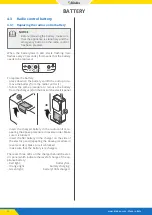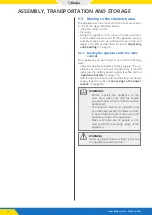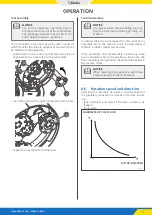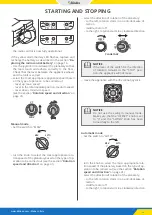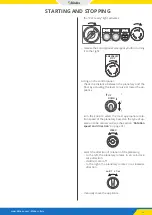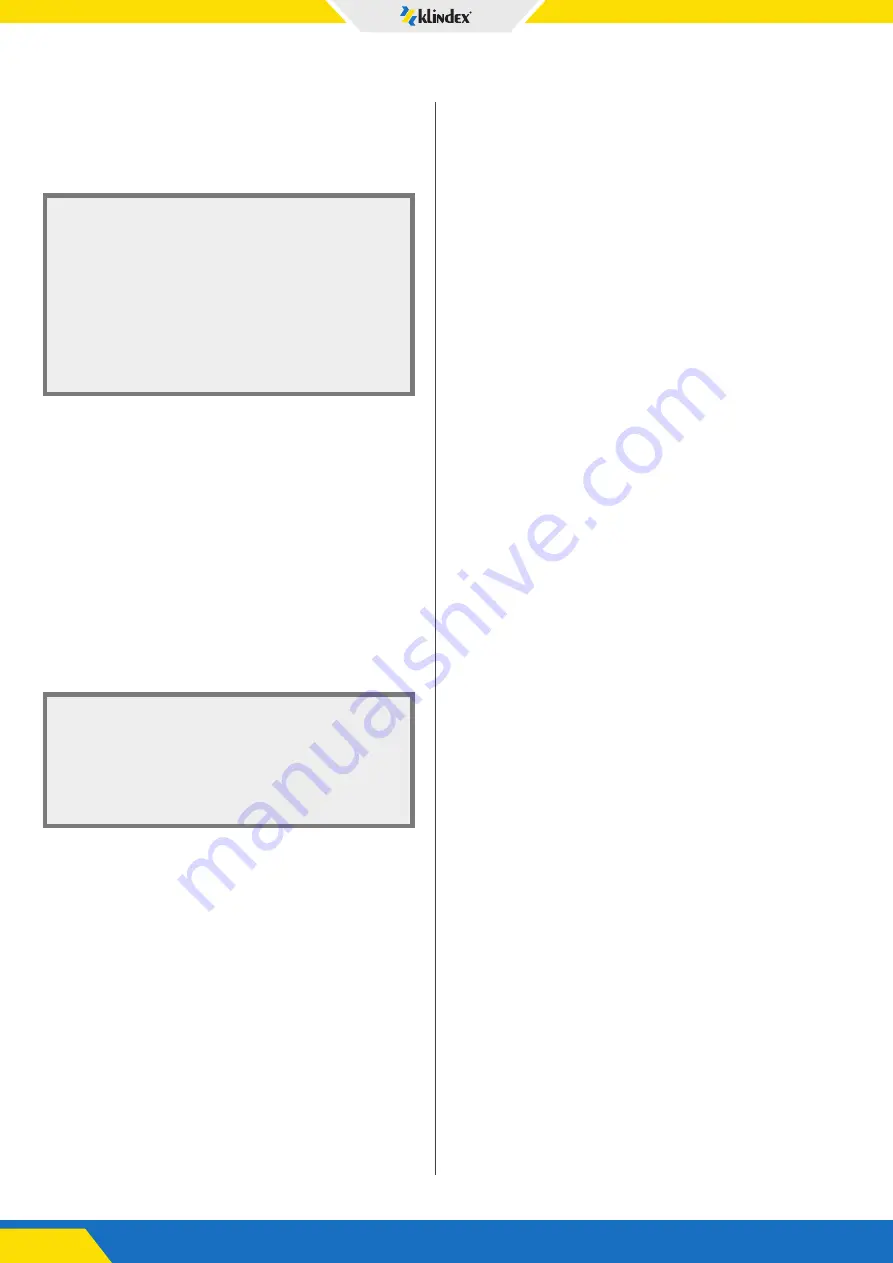
24
www.klindex.com - Made in Italy
OPERATION
8 Operation
8.1 Protective clothing
l
NOTICE
During grinding operations, the operator
is exposed to the following risks:
– intoxication and poisoning due to the
accumulation of dust and vapours con-
taining harmful chemicals
– permanent damage to ears due to ex-
tended exposure to noise
– risk of trapping due to moving parts
To reduce the effects of damage caused by accidents,
it is recommended that type-approved protective
clothing is worn. Always wear:
– safety helmet
– headphones or ear-buds
– glasses or protective visor
– breathing mask
– gloves
– close fitting, resistant, comfortable clothing to allow
free movement
– boots with steel toe-cap and anti-slip sole
8.2 Identifying the hardness of the
concrete
l
NOTICE
In order to select the most suitable tool
for grinding operations, the hardness of
the concrete must be identified and the
condition of the surfaces must also be as-
sessed.
The first factor to be considered when selecting the
tool is the hardness of the concrete, which is calculat-
ed using its resistance to compression. The higher the
resistance, the harder the concrete resulting in grind-
ing operations being more difficult to complete.
Other factors which affect the choice of the tool are:
– condition of the surface. If it is smooth, grinding will
be more difficult, if it is rough or damaged, grinding
will be easier
– the presence of any finishes or residues (for exam-
ple, epoxy finish, adhesives and glue for tiles, etc.).
When grinding a surface for the first time and there
are any doubts regarding the hardness, it is always
recommended that a hard bond diamond is used at
the beginning. This will ensure minimum wear on the
diamond segments.
8.3 Tool selection
8.3.1 Diamond segments
Number of diamond segments below the appli-
ance
Increasing the number of segments below the appli-
ance:
– reduces the pressure on each individual diamond
segment
– reduces the wear on the diamond segments
–
reduces the load on the appliance resulting in
less energy consumption
– a more even scratch pattern is created, especially
on soft floors.
However, if the number of segments below the appli-
ance is reduced, the opposite will occur.
Wet and dry grinding
When wet diamond segments are used:
– production speed increases compared to dry grind-
ing
– diamond segments are subject to wear more rap-
idly due to the frequency of the liquid mortar and
therefore harder bonding agents can be used (com-
pared to dry grinding)
– scratches from diamond grains will be deeper.
However, if the number of segments below the appli-
ance is reduced, the opposite will occur.
Take note of the following indications when using dry
diamond segments:
– the production speed is lower on harder materials
compared to dry grinding
– softer bonding agents are required to help combat
segment wear given that there is no liquid mortar
which can help the wear of diamond segments
– scratches from diamond grains will not be as deep
as with wet grinding
– diamond segments generate more heat.




